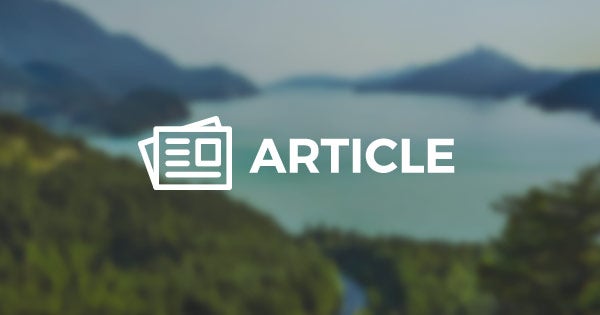Canoe Design: Hull Shape, Sides & Rocker
Hi, I'm Danny Lang. Today we're going to discuss hull shapes, side shapes, and also rocker on canoes.
Canoe Hull Shape - Flat vs. Shallow Arch
Here we have a great example of a flat bottom canoe on the Old Town Saranac 146. As you can see with my paddle this is a very flat bottom canoe. The paddle shaft rests across almost the entire hull. This is very popular among recreational canoeist and families; because it provides a lot of stability in calm conditions. They're typically wider and very easy to use.
Beside us we have a great example of a shallow arch on the Old Town Appalachian; as you can tell when I rest my paddle shaft on the hull, very little of this shaft is actually touching the hull. This design is ideal in less-than-perfect conditions, such as wind, waves, and current. It's very popular among river runners and expedition style paddlers because it helps the boat track when it displaces the water.
Canoe Sides - Straight vs. Tumblehome
Now, let's take a look at canoe sides. I have two examples here: Tumblehome and Straight.
Straight sides are just that. As you can tell in this Old Town Guide, from the hull up to the gunnel is very vertical.
On the Old Time Pack however, you can see a great example of the Tumblehome. Tumblehome is when the gunnel width is less than the overall width of the canoe. You can see that by looking down the side, and see that the widest point is just below the gunnel, and it actually tucks in towards the gunnel, towards the top. This makes it easier to paddle because it doesn't reach out as far over the gunnels.
Curve of Hull = "Rocker"
Now, let's talk about rocker. Rocker is the curvature of the hull as it rises to the bow and stern. The Old Town Appalachian here is an example of a canoe with lots of rocker. The more rocker the canoe has, the more maneuverable it's going to be. This is ideal in rough water conditions where there's current, waves, and other obstacles that you need to maneuver around.
Now, when a canoe has less rocker more of the hull is in the water at all times. This is going to be beneficial when you're doing long distances, such as touring or expedition style canoeing.
Hopefully now, you will have a better understanding of canoe shapes and designs. This will help you in choosing the right canoe for needs.
Thanks for watching and paddle well.
~Get the BWCAW Tee~
With over 1,090,000 acres of wilderness area, the BWCAW is a paddler's paradise.
Related Articles
Ever wonder what exactly the weight capacity of a board was for? Turns out it's for the performance of…
Ranging from casual recreational crafts to sleek racers to bomb-proof whitewater and other rec’ boats,…
It's hard to ponder the evolution of the kayak without revisiting where it all began. Enter the Inuit…
Learn the full glossary of canoe terminology in this excerpt from The Complete Book of Canoeing by I.…



